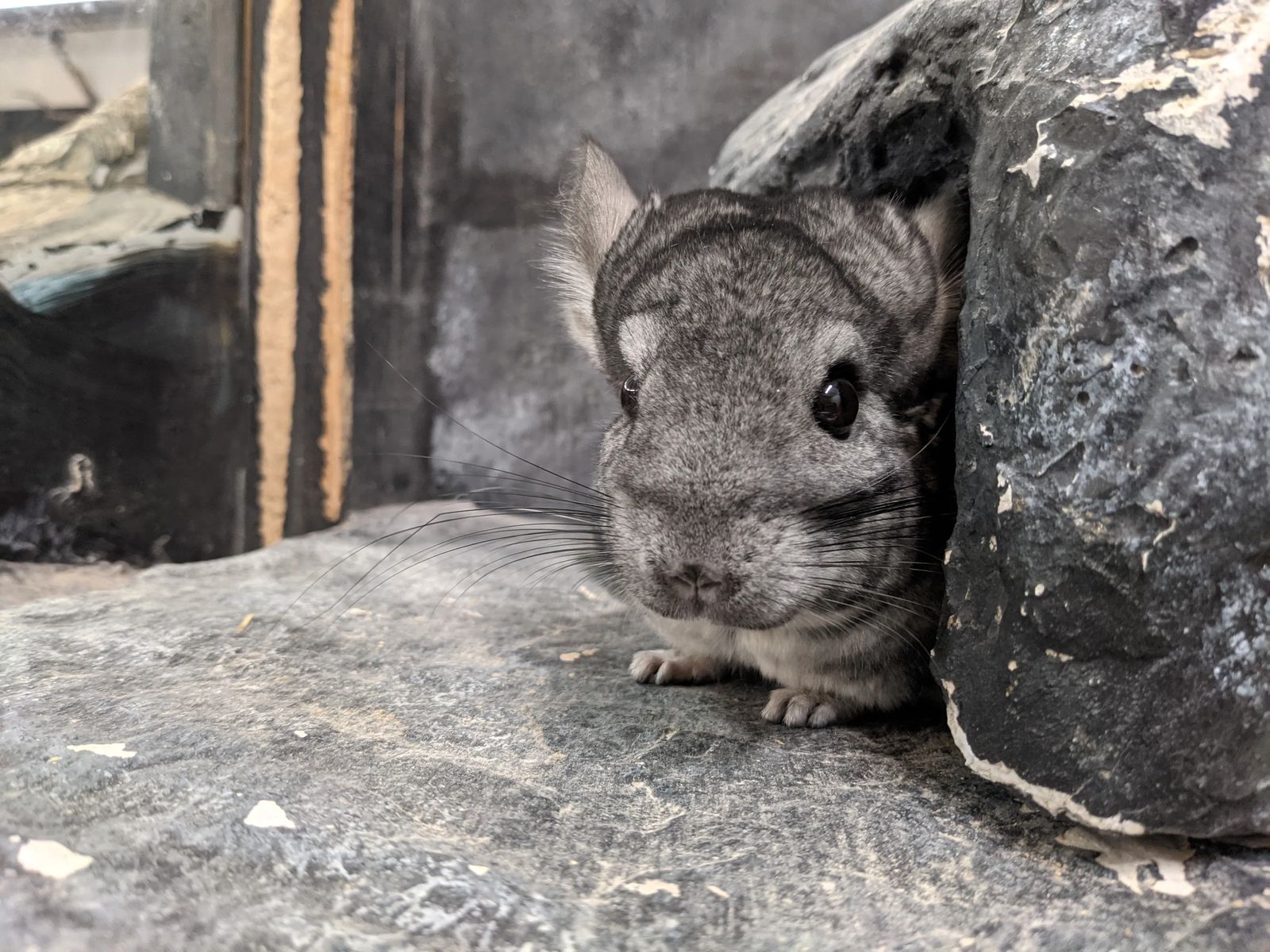
Long Tailed Chinchilla
CHINCHILLA LANIGERA
According to the Chinchilla Chronicles website, an American mining engineer named Mathias F. Chapman fell in love with chinchillas and received special permission from the Chilean government to import nearly a dozen chinchillas into the U.S. in the 1920s. He was careful in the transport, taking over a year to slowly acclimate the chinchillas to a lower altitude, and he brought along their natural food for the journey. It is thought that nearly every pet chinchilla in the U.S. today is a direct descendant of the 11 chinchillas Chapman imported to the United States. Domestic chinchillas, which have been selectively bred for nearly 100 years, are almost twice the size of those in the wilderness. Chinchillas are found in rocky, sloping environments originating along the Andes Mountains. Their incredibly thick fur keeps them warm in the high elevations. They are very agile jumpers and can jump up to 5 feet above their head as well. Chinchillas are unable to pant or sweat to cool themselves off. Instead, they rely on their large ears to regulate their body temperature. Chinchillas have the highest fur density of any land animal with over 20,000 hairs per square centimeter and more than 50 hairs per follicle. To maintain a healthy coat, chinchillas take dust baths regularly. They cannot get their fur wet; it is so dense that it is unable to dry properly, interfere with their temperature regulation, and may mold.
Click HERE for a Chinchilla Activity Sheet!
Our Current Residents
Both Minnie and Daisy are pet surrenders and were donated to ZooMontana in 2019.
Minnie, Female - Born May 20, 2016
Minnie has darker fur, bigger ears, and has a smaller head all compared to Daisy.
Daisy, Female - Born May 20, 2016
Daisy has a larger head, smaller ears, and a lighter coat. She tends to be friendlier and more people oriented.
Taxonomy
- Kingdom: Animalia
- Phylum: Chordata
- Class: Mammalia
- Order: Rodentia
- Family: Chinchillidae
- Genus: Chinchilla
- Species: Chinchilla lanigera
Animal Facts
- Herbivore: eats a wide variety of seeds, grass, leaves, roots, lichen, mosses, and even insects and eggs at times
- Population: endangered
- Habitat: Mountains
- Nocturnal: active during the night














































